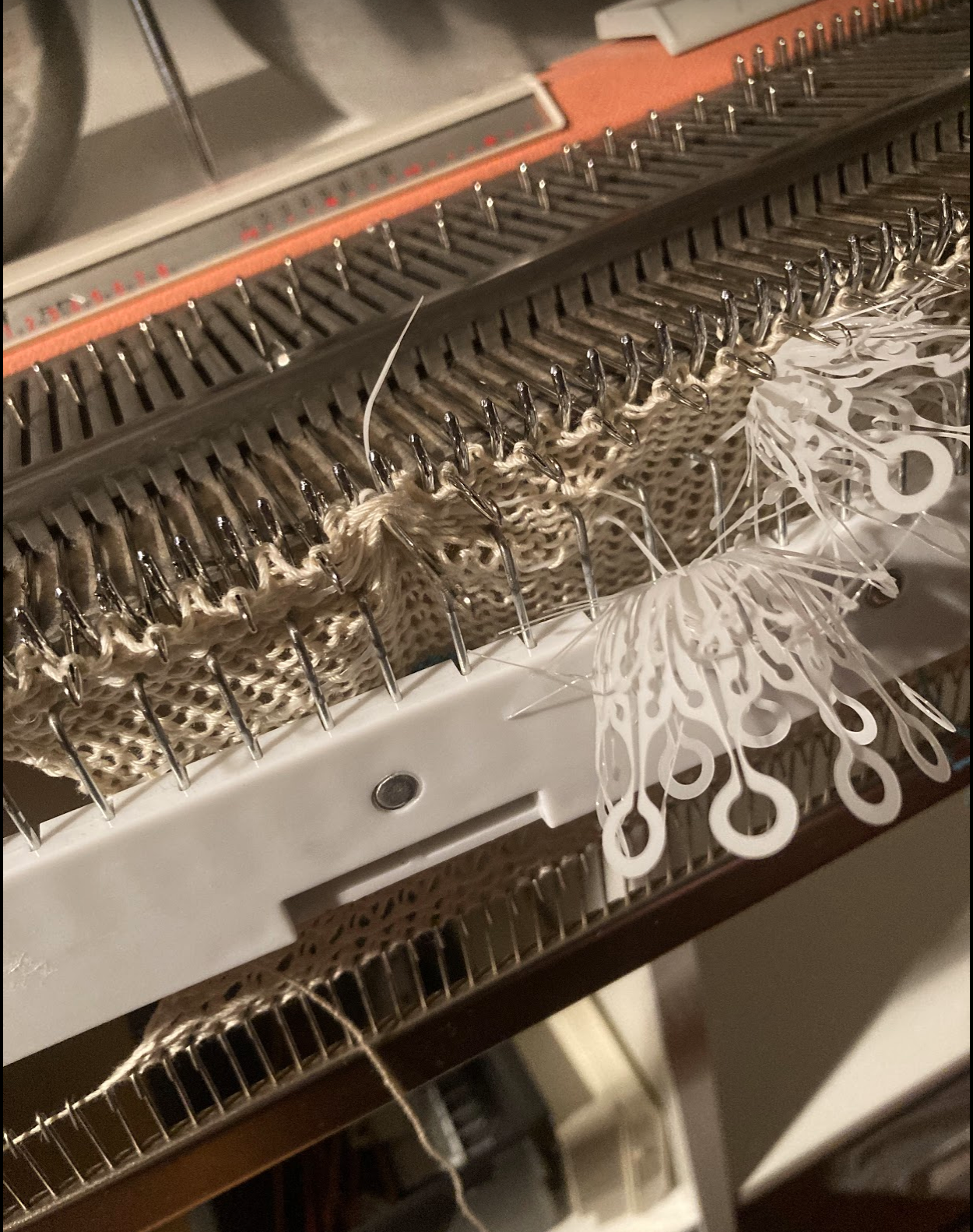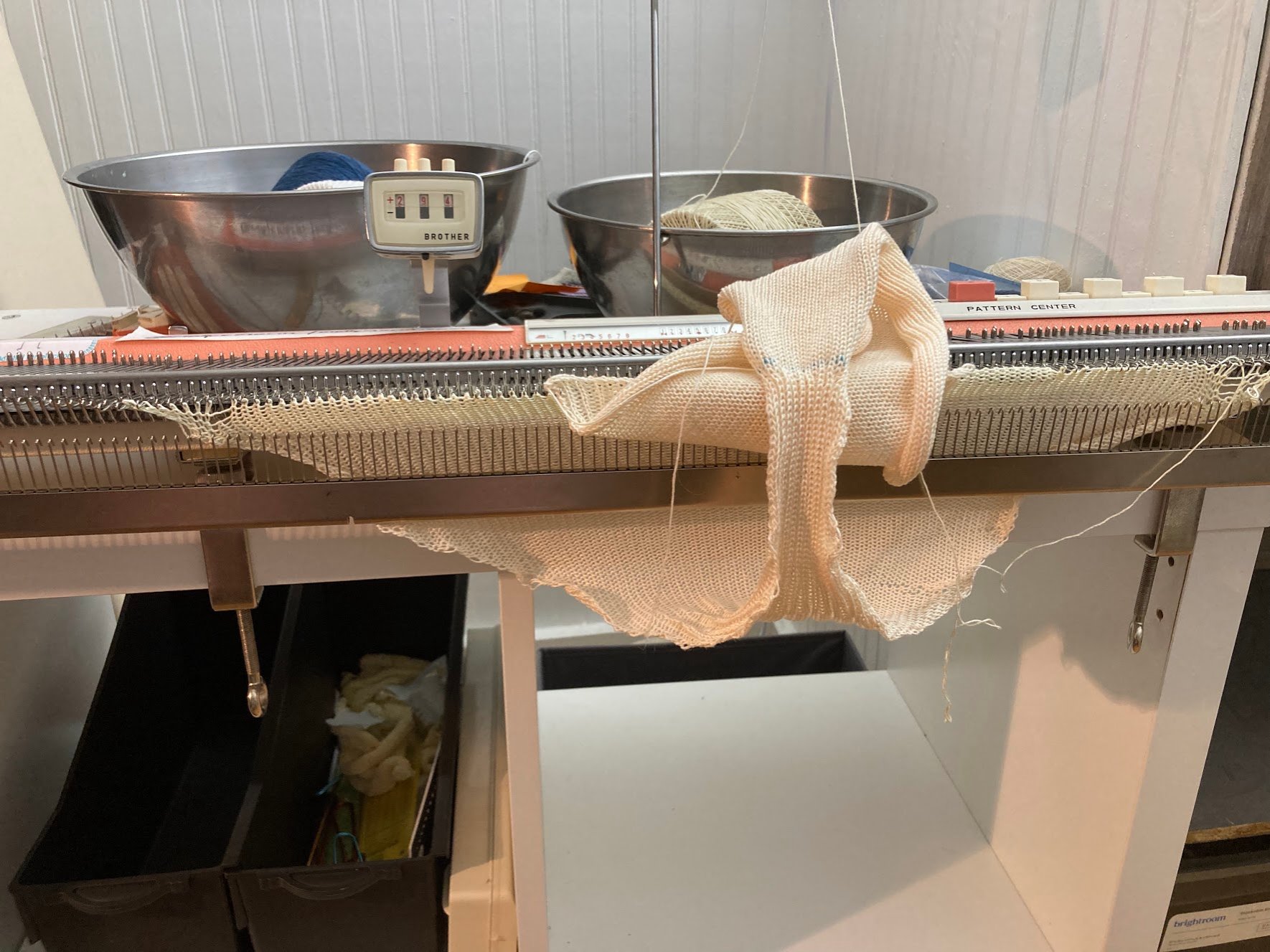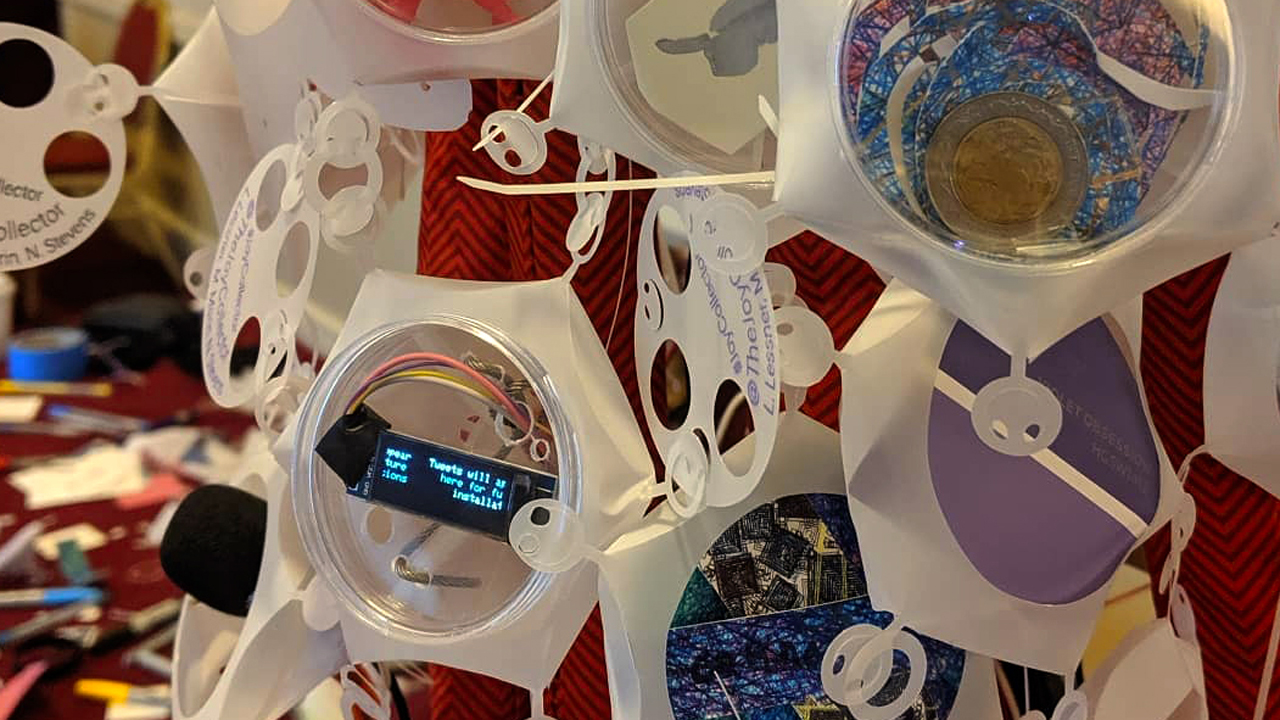
For the last few years, I’ve been working with a 1965 Brother home knitting machine in my studio with an interest in the machine’s visible mechanics, the way it hovers between industrial and domestic activity, and the mechanized way it executes patterns. I’ve been making fragmentary, hybrid works that incorporate bits of knitting into other materials.
In doing some initial research for a new project, I came across Lydia M. Arantes article “Unraveling Knitting: Form Creation, Relationality and the Temporality of Materials” in the American Journal of Folklore (2020). In it, she argues that the hylomorphic model of design is a useful part of understanding knitting as material lore. She pushes against Tim Ingold’s preference for the morphogenic model of design as a framework through ethnographies of hobby knitters in Europe who oscillate between hylomorphic and morphogenic approaches to their making. In reading this, I was reminded of Matthew L. Jones’s excellent book Reckoning with Matter: Calculating Machines, Innovation, and Thinking about Thinking from Pascal to Babbage (2016) in which he discusses hylomorphic design in the context of early counting machine inventors’ approaches to making machines that would perform basic arithmetic. As an artist working in both fibers and digital fabrication, I find both of these helpful for thinking about my own making and for working on some of the questions about design philosophies that have been simmering for me recently.

Social anthropologist Tim Ingold defines hylomorphic design as “impos[ing] forms internal to the mind upon a material world” (Making, 2013), and morphogenic design as a process by which the material world informs and shapes what we make out of it. In my time working with the knitting machine, I have been taken with the complex but readable mechanics of the machine, and the unique way in which patterns are written for it. The patterns are written to tell the user how the machine is to be operated (which button to press, knobs to turn, passes to make) rather than to tell the maker which stitches to make (knits, purls, slips, tucks). For me, these patterns are designs not only once removed from their materials, but doubly mediated through the machine itself. I find this abstraction particularly interesting in a fibers machine because of the wild material variation that will be introduced by the knitters choice of materials, cadence of running the knitting carriage, and even temperature and humidity. I am looking forward to doing some work on this dynamic in the near future.

Alongside my knitting, I use a “very rapid prototyping” approach to design, cut and fold objects out of flat material (in this case, frosted mylar). In the work shown here, I started with a very loose hypothetical shape for a conical flower and drew a cut-and-fold pattern in Illustrator that I used a vinyl cutter to cut on mylar. I folded it, noticed ways in which it was working and things that needed to be changed, and made a new pattern. I modified proportions and redesigned joints, then repeated the process, adding complexity, adjusting features for easier folding, and including more decorative elements over several iterations. In the work here, each iteration is then knitted into a cotton fragment on my Brother machine.
What is generative for me about this process is that I am not using 3D modeling software to generate my cutting patterns, rather, I am using my experience with the machines and materials along with the feedback each prototype gives me to do the unfolding in my head and draw out the patterns flat. I believe this allows me to bring more life and complexity to the work more quickly, and is certainly in line with an exploratory, morphogenic approach, even though it uses technologies built for a more top-down approach to design. For me, this small piece embeds my one process and brings the handmade nature of my process in tension with the various technologies I use to produce it.













